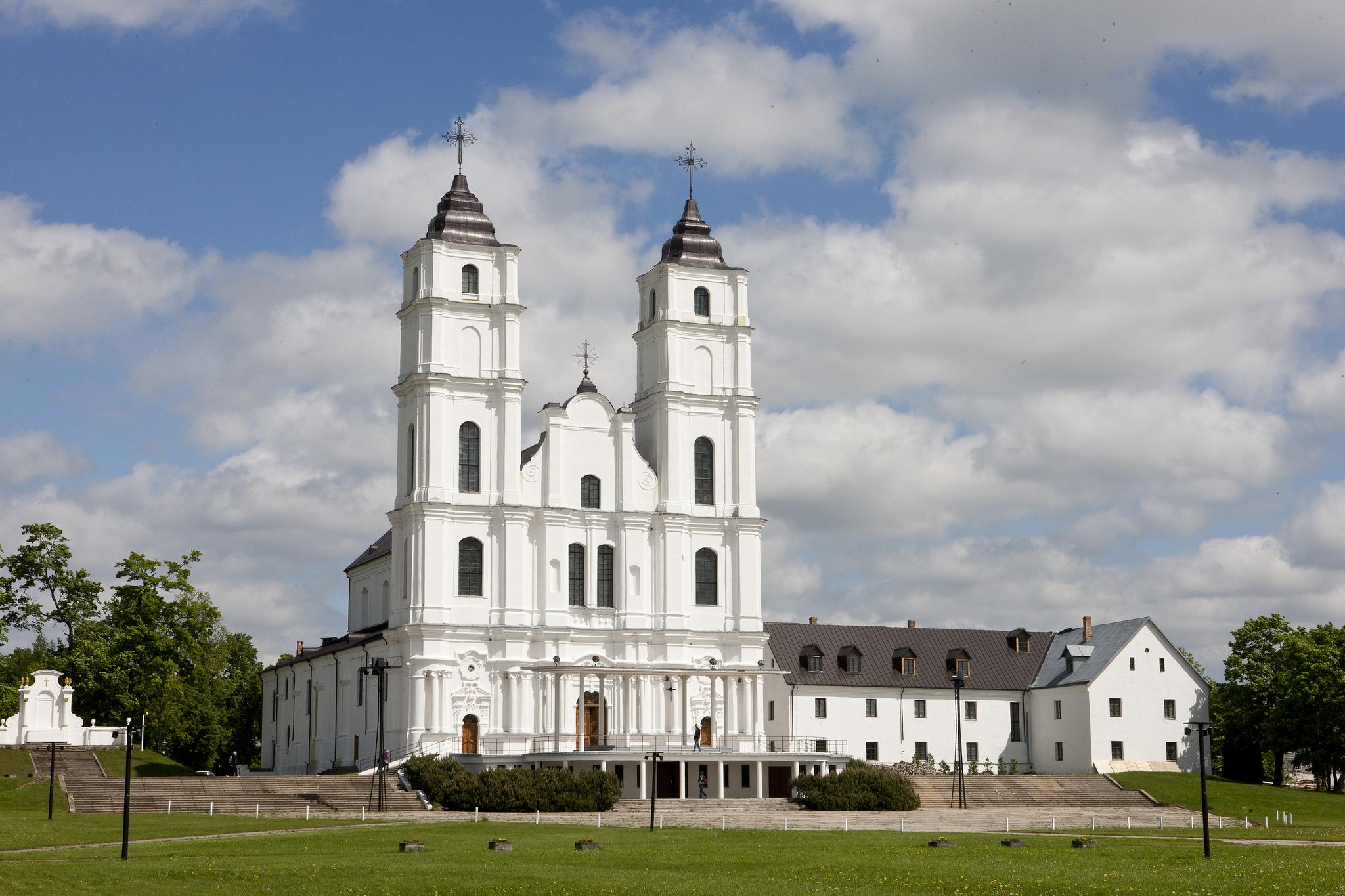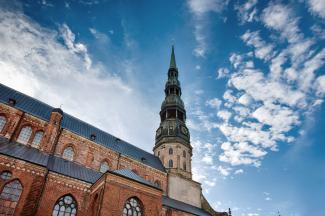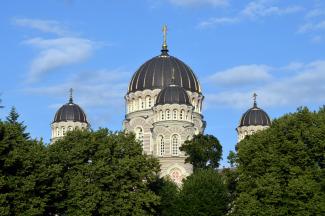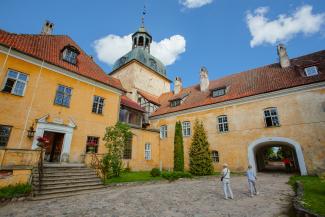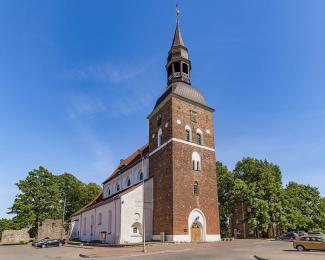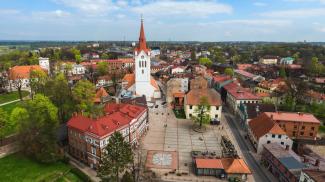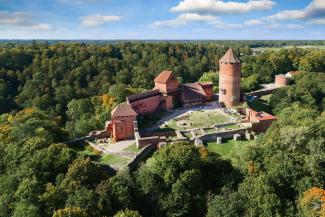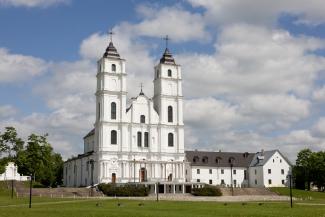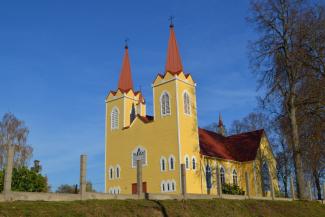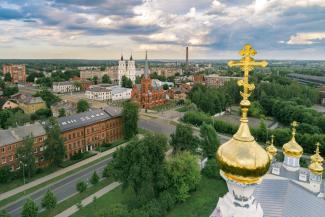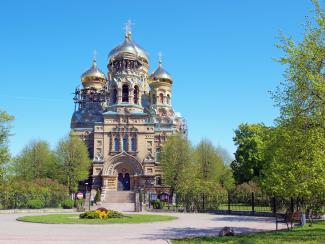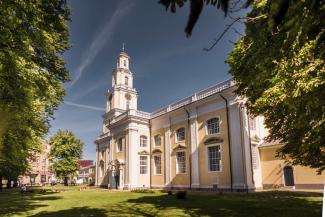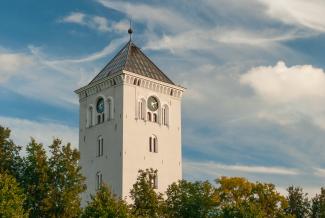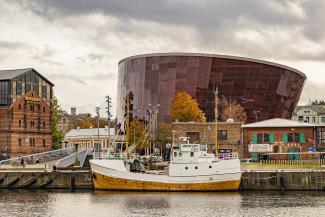Visiting Latvian churches and cathedrals is an exciting journey on the history of civilisation through the centuries and art styles. The co-existence of different denominations has created the diverse sacred architecture in Latvia, and in addition, each region of Latvia has its own architectural peculiarities.
Church towers, which mark the unique silhouette of Old Riga, are one of the symbols of the capital of Latvia. Different religions coexist in Riga and Latvia: Catholics, Lutherans, Orthodox, Baptists, Old Believers.
The most notable churches in Riga
Riga Cathedral is certainly the most important church of the capital, the pride of which is the organ, which is recognised as one of the most valuable historical organs in the world. In addition, the building itself is one of the oldest sacred buildings in Latvia, as well as in the Baltics.
St Peter's Church is honoured as the highest church in Riga. The church tower offers a breathtaking panorama of the red roofs of Old Riga, modern Riga, the Gulf of Riga and the River Daugava with its wide harbour. One of the symbols of Riga is the rooster, which wallows right on the St Peter's Church crest.
From the 15th century to 1941, there have been six wind indicators - roosters - on the spire of the tower. The first rooster was bent by a storm, the second was blown off the tower by a storm, the third rooster, damaged by the wind, was removed, the fourth fell in the churchyard during a storm, the fifth collapsed, the sixth rooster, already repaired once, fell down with the entire tower. In 1970, a new, the seventh, rooster was installed, which was restored and re-gilded in anticipation of the Church's 800th anniversary.
Riga Nativity of Christ Orthodox Cathedral is the largest Orthodox church in Riga, which has survived the Soviet era as a planetarium and restaurant and has become a sacred building again, where regular Orthodox services are held. This building contains much historical evidence; for example, during the years of Soviet rule, when faith and religion were levelled, churches were often used for other purposes, such as the St Saviour's Church housing a student club, but in many places these cult buildings served as warehouses. Currently, the churches have regained their status.
Churches in Vidzeme
Vidzeme has always been a centre of trade, culture and religion in Latvia throughout the ages. Some of the evidence of the time has not been preserved, but many impressive buildings can still be visited today - on tours or religious services.
Ikskile St Meinhard's Church on St Meinhard's Island is unfortunately one of the churches that has succumbed to the cruel ravages of time. The ruins of the oldest church in Latvia are located on St Meinhard's Island, surrounded by the waters of the Daugava. It is the first holy place of Christianity in Latvia. More than 800 years ago, with the construction of St Meinhard's Church, the spread of Christianity in Latvia began.
Lielstraupe Castle was built in the Romanesque style at the same time as the church, but nowadays it has acquired baroque forms. Until 2018, a narcological hospital operated in the Castle, but now the Castle is open to visitors. After the Castle was built at the end of the 13th century, a small town Straupe developed around it.
Later, during the Polish-Swedish wars, Lielstraupe Castle was destroyed and after several changes of ownership, it came into the possession of Count Peter Lacy. During his time, the Castle underwent major reconstruction and acquired its characteristic baroque forms.
St Simon Church in Valmiera is one of the most important monuments of Latvian medieval architecture, which houses valuable art monuments: medieval tombstones, an altarpiece by painter Karl Christian Fogel – Fogelstein, a pulpit made in 1739, an organ by Friedrich Ladegast - an important artist in Europe, and others. Today, anyone can view the church bells and the clock mechanism. In addition, the panorama of Valmiera opens from the observation deck of the restored church tower.
Cēsis St John's Church is one of the oldest medieval architectural monuments in Latvia. The church was built in the beginning of the 13th century, during the Christianisation of the Baltics, for the needs of the Livonian Order, because Cēsis was the residence of the order, thus Cēsis became one of the most important centres of German power in the Baltics from 1237 to 1561.
Turaida Museum Reserve houses one of the most important churches in the history of Vidzeme. In Turaida Museum Reserve, it is possible to familiarise yourself with expositions on the history of archaeology, culture and art, which tell visitors about events starting from the 11th century. Many stories are stored here: about the medieval castle and church, the Libyans of the Gauja, the ancient centre of the manor and Dainu Hill.
Churches in Latgale
Latgale has Old Believers and Orthodox churches that are so exotic to Westerners, touching and charming them with the simplicity and colour of their ancient wooden buildings, and you can get to know the daily life of Old Believers in the ethnographic Old Believers' village of Slutiški.
The Aglona Basilica is one of the most important Catholic holy places, which gathers hundreds of thousands of pilgrims every year on the day of the Assumption of the Blessed Virgin Mary into Heaven on 15 August. In this baroque style church, the holy image “Our Miraculous Lady of Aglona” is kept, which is only unveiled to the public during religious celebrations.
Pilda St Peter and St Paul Roman Catholic Church is one of the largest and most beautiful wooden churches in Latgale. It has two tall towers. Pilda Church is a 17 m long and 14 m wide building with a wooden floor and a tin roof.
Church Hill in Daugavpils is great proof of how important and diverse faith is in this region of Latvia. Every traveller who wants to see Daugavpils must visit Church Hill, a place where churches of four denominations are located next to each other.
Churches in Kurzeme
In Kurzeme, Alsunga, you can find Alsunga St Michael Roman Catholic Church, which as a part of the cultural space of the Suiti, a peculiar Catholic island in the Lutheran Kurzeme, is included on the UNESCO cultural heritage list. At the beginning of the 19th Century, as well as in later times, Alsunga or Alschwang has been the largest Catholic centre in Kurzeme.
In Karosta in Liepāja - the largest military territory of Tsarist Russia in the Baltics, where a submarine base was located during the Cold War, majestically stands St Nicholas Russian Orthodox Naval Cathedral with gilded domes.
Liepāja’s Holy Trinity Cathedral is located on Lielā Street in the centre of the old town. Construction of the Cathedral began in 1742 and consecrated in 1758. The construction was completed only in 1866, when according to the original plan the steeple had 2 floors added to it. In the spring of 2020, the reconstruction of the facade of the church building was completed
The church’s outer architectural style is late Baroque with features of Classicism. The interior of the cathedral has the luxury and splendour typical of the Rococo style. Still present is a luxurious box meant for seating the dukes of Kurzeme.
Churches in Zemgale
Zemgale is known as a fertile agricultural area in Latvia. Work has always gone hand in hand with appreciation of nature and processes, and also with faith. And there is no shortage of impressive, interesting historical churches in Zemgale. Currently, it is possible to visit interactive and exciting historical expositions, observe the Jelgava panorama and receive tourist information.
The tower of Jelgava Holy Trinity Church is the oldest surviving building in Jelgava. The church itself is one of the first masonry churches of the Lutheran congregation to be built in Europe. It was built in 1574 by the order of Gotthard Ketler, Duke of Courland.
Skaistkalne Church is the second most popular pilgrimage site of the Virgin Mary right after Aglona - both in the past and today. In the Skaistkalne shrine, in the side altar, there is a holy picture of the Mother of God - the Patroness of Families of Latvia - from whom people, especially spouses and families, have begged for abundant mercy.
